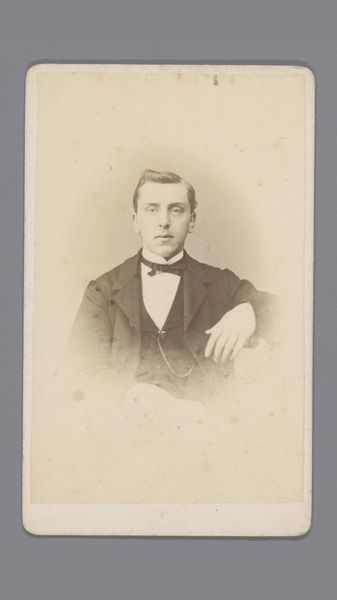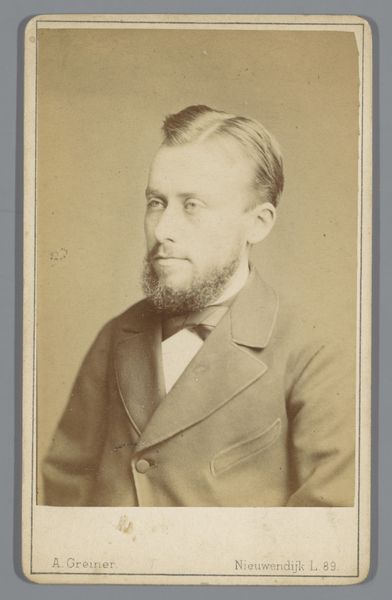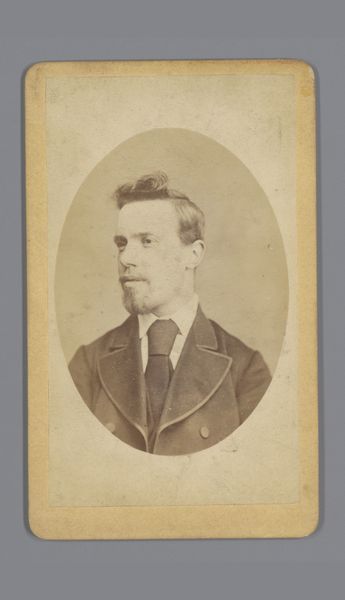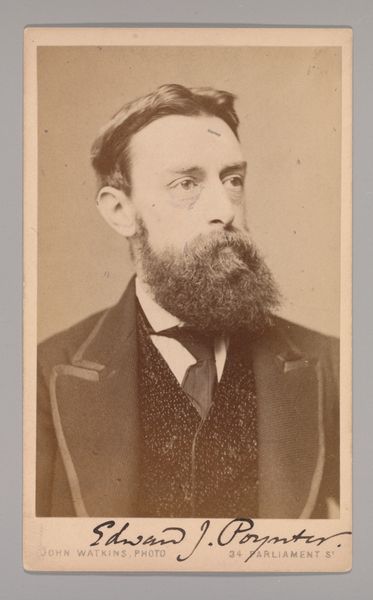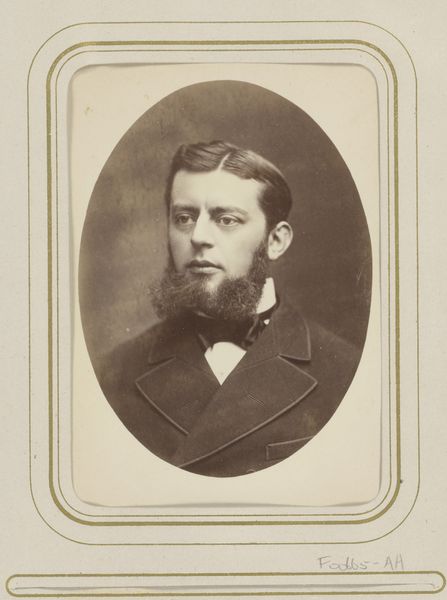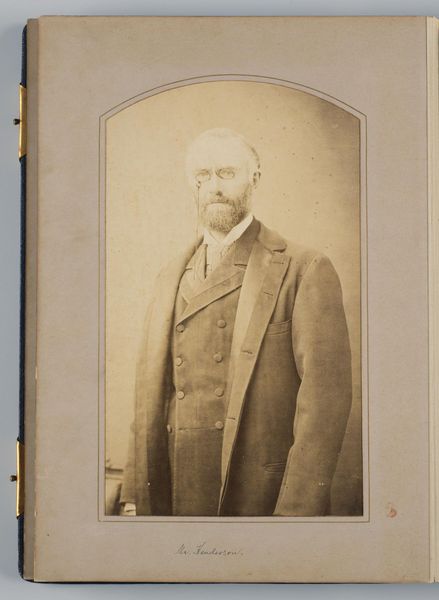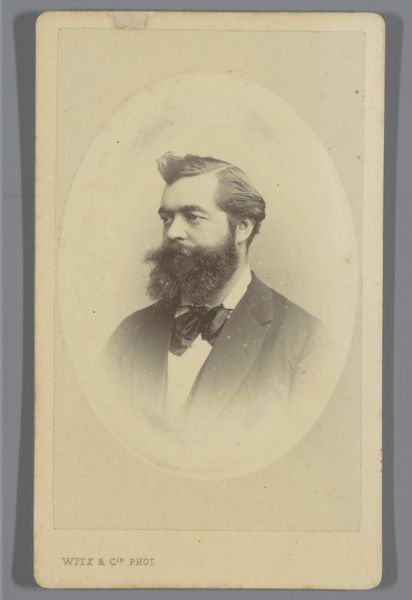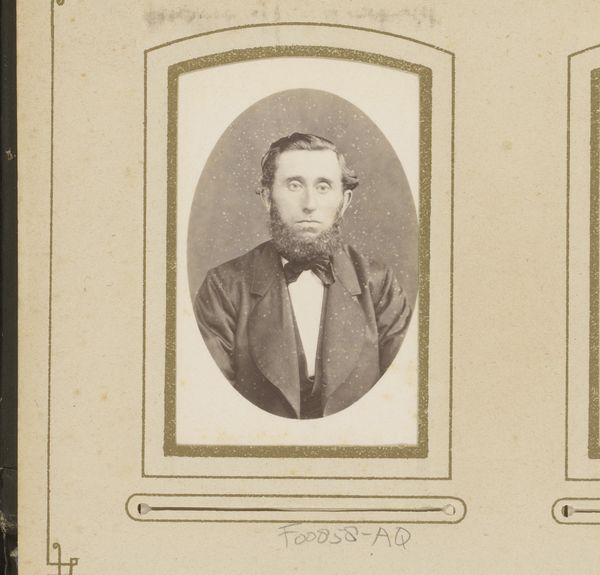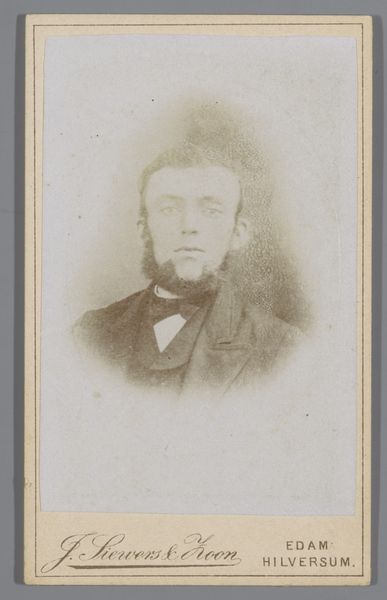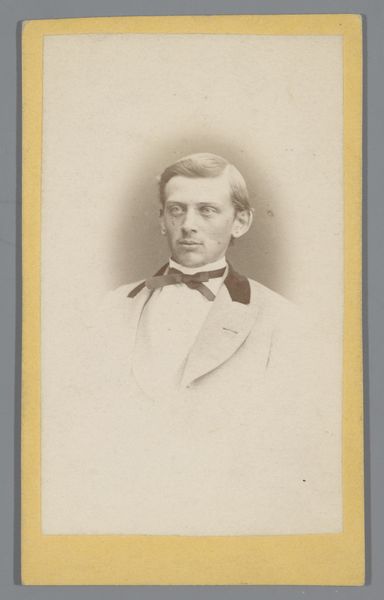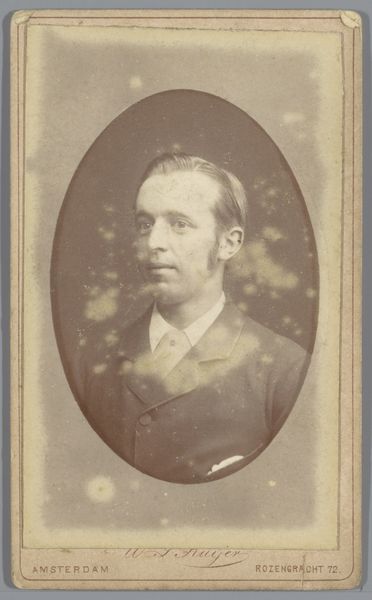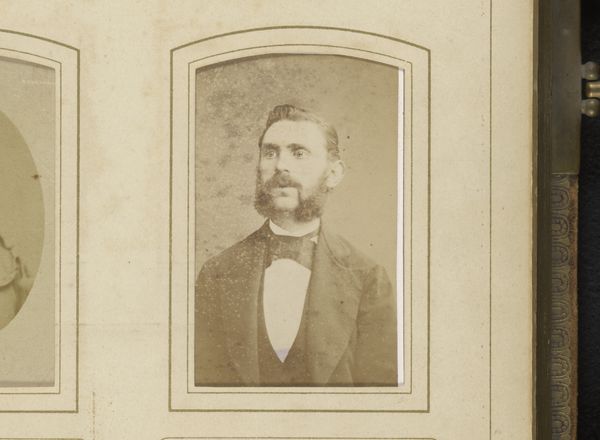
photography
#
portrait
#
photography
Dimensions: height 102 mm, width 62 mm
Copyright: Rijks Museum: Open Domain
Editor: Here we have "Portret van een onbekende man" which translates to "Portrait of an unknown man," by Louis Fraenkel, made sometime between 1878 and 1886. It's a photograph, a very common medium at the time, of course. It feels like a standard portrait, quite formal. What jumps out at you? Curator: Well, beyond the sitter’s somewhat stoic expression, what immediately strikes me is the process. Consider the rise of photography in the late 19th century – how it democratized portraiture. Before, only the wealthy could afford painted portraits. Suddenly, ordinary individuals could capture their likeness. Who was this man and what class did he occupy to be able to commission this photograph? The materiality of the image, the paper, the chemicals used, these speak to the social and economic shifts of the era. Editor: That’s a great point. It is easy to forget how radical photography was at the time. Curator: Precisely. The ‘making’ of this image—the labor involved in creating the photographic plate, the printing process, the marketing by the studio – Fraenkel's name is clearly displayed—these elements move the image beyond a simple representation of a man. Were such photographic services becoming available to working-class individuals? Editor: So, you are seeing it less as an individual portrait and more as a product of its time? Curator: Exactly! Think of the consumerism it represents, the act of commissioning the photograph. The details of his coat—the material, cut—all represent someone's labor and production. How does the format affect your understanding, knowing it's likely a "carte de visite?" Editor: Now that you mention it, the ‘unknown’ status of the sitter takes on new weight. The mass production clashes with the intimate nature of portraiture. It’s almost melancholic to think of this person being lost to history. Curator: I agree. Perhaps appreciating the object helps highlight how many histories are intertwined here, materially speaking.
Comments
No comments
Be the first to comment and join the conversation on the ultimate creative platform.
